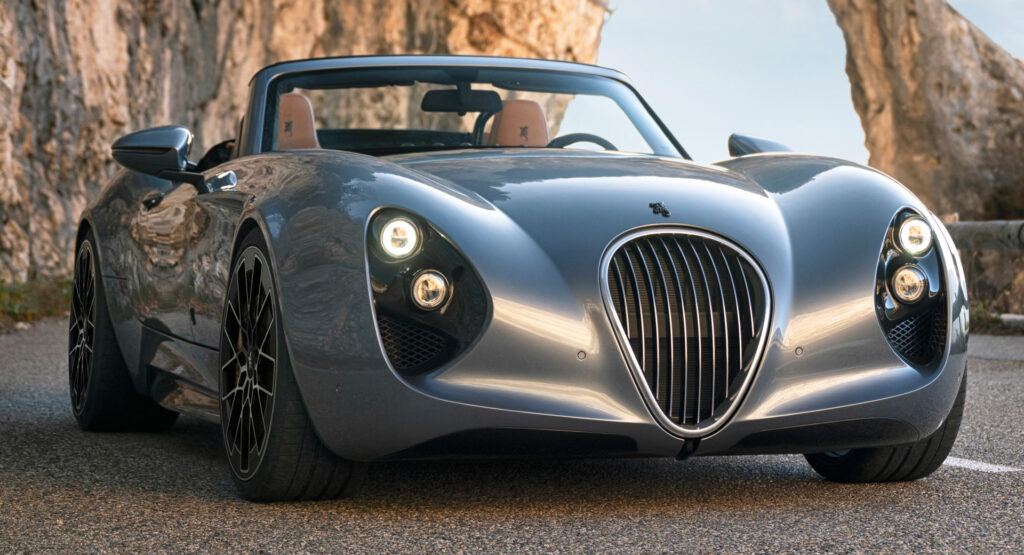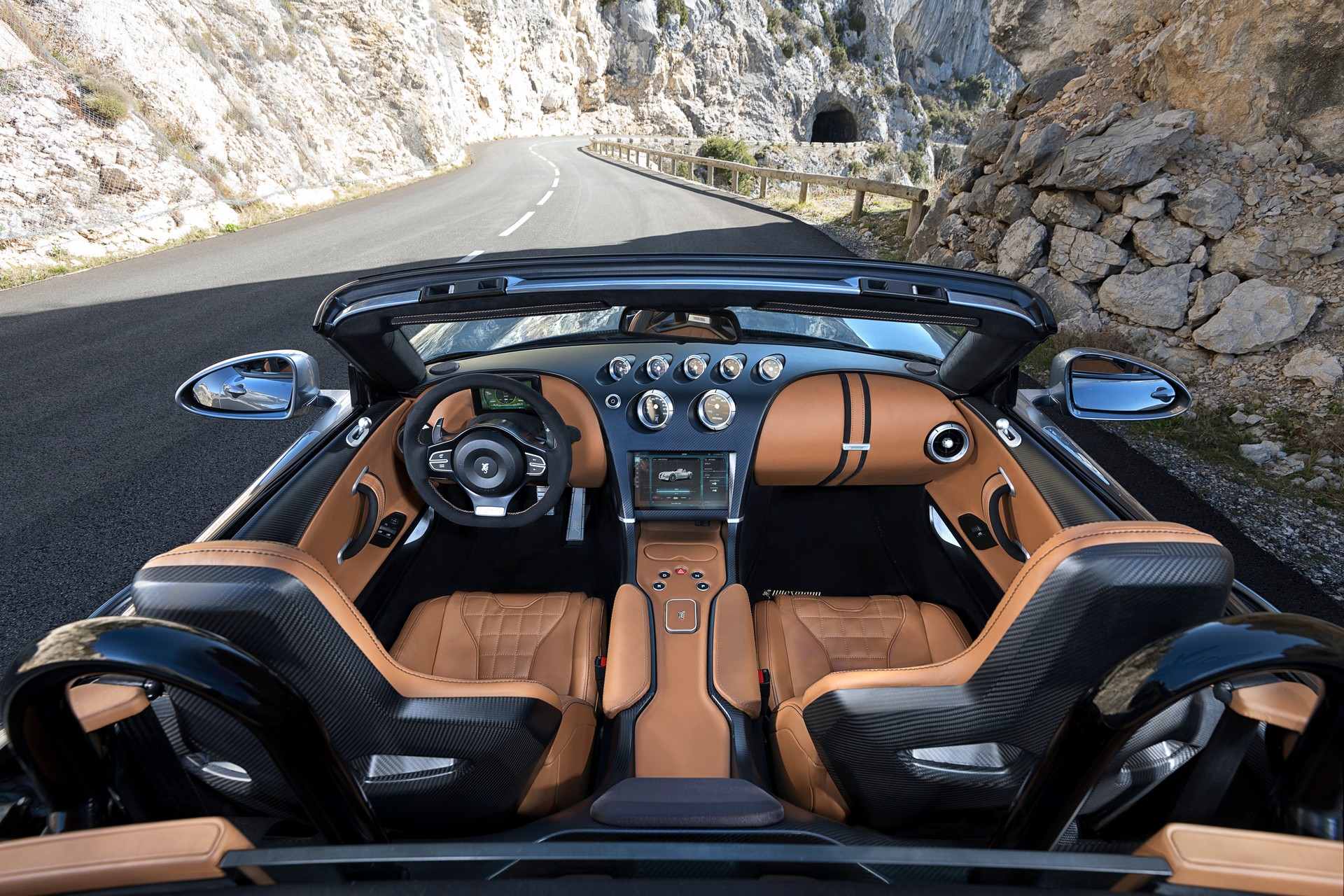Wiesmann introduced an electric roadster, known as Project Thunderball, earlier this year and now the company has released additional details ahead of its launch in 2024.
The model rides on a bespoke aluminum spaceframe architecture and features a T-shaped 92 kWh (gross) Li-ion NMC battery pack, which weighs 1,102 lbs (500 kg) and enables the roadster to travel approximately 310 miles (500 km) on a single charge. Wiesmann notes the battery’s capacity is similar to what’s found on electric sedans and crossovers, and this enables the roadster to “bridge the gap from a pure short-trip leisure car to a serious weekend car.”
The battery powers two rear-mid mounted motors, which produce a combined output of up to 671 hp (500 kW / 680 PS) and 811 lb-ft (1,100 Nm) of torque. The company says this should enable the carbon fiber bodied roadster to rocket from 0-62 mph (0-100 km/h) in 2.9 seconds.
Also: Wiesmann Project Thunderball Is A €300,000 Electric Roadster With 671 HP
When the battery is low, owners will be thankful for Project Thunderball’s 800V high-voltage architecture that allows for a 300 kW DC fast charging capability. While Wiesmann didn’t say how fast the battery can be recharged, we wouldn’t be surprised if the car can go from a 10% to 80% charge in less than 30 minutes. At home, owners will be able to charge at rates up to 22 kW.
To ensure optimal battery performance, Wiesmann has developed a “sophisticated thermal management system” that uses a water-glycol mix and a cooling plate that “transfers the heat to the base of the module as quickly as possible.” The model also has a battery management system, which gives “engineers the freedom to adjust, calibrate and fine-tune the vehicle’s drivability … for all driving states and ambient conditions.”
To help maximize the car’s range, Project Thunderball has been equipped with an intelligent regenerative braking system. While regenerative brakes are common on electric vehicles, Wiesmann’s system has five levels of adjustment as well as steering wheel-mounted paddles that allow for “instant adjustment of the car’s regenerative braking power.” Owners will also be able to adjust the system to “give a powerful engine braking effect when going downhill or braking into corners.”
Project Thunderball measures 174.8 inches (4,440 mm) long, 87 inches (2,210 mm) wide, and 50.6 inches (1,285 mm) tall with a wheelbase that spans 102.2 inches (2,595 mm). The car tips the scales at 3,913 lbs (1,775 kg) – although they also claim 3,747 lbs (1,700 kg) – and features 21-inch wheels as well as a fully adjustable sports suspension with adjustable anti-roll bars.
In a statement, Wiesmann CEO Roheen Berry said the company has seen an “enthusiastic response from customers” as 75% of first year production slots have already been allocated. That’s not too shabby considering the model starts at €300,000 ($309,039).

































